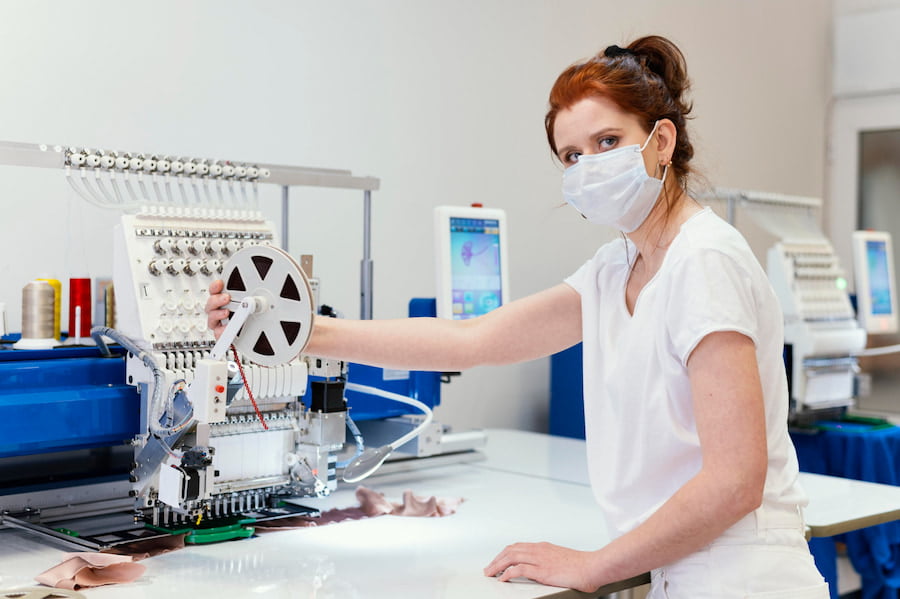Driven by shifting consumer preferences, rapid technological advancements, and increasing sustainability concerns, the textile industry is undergoing a profound transformation from conventional practices. An apt illustration of the evolution taking place is through the example of T&A Textiles Manchester, one of the finest companies in this sector, enshrining more evolved and sustainable methods of manufacturing.
Furthermore, embracing eco-friendly practices and making use of state-of-the-art technologies such as 3D printing and smart textiles industry places T&A Textiles Manchester at the forefront of any change affecting textile production. Its circular economy models and ethical sourcing underline an emphasis on minimising environmental impact and ensuring clean labor conditions. These trends continue to influence the industry. In this article, we will discover the latest trends in the textile industry.
Smart Textiles Industry
It is because of advancements in technology that smart textiles industry will continue to revolutionize interactions between connected devices and the human body. These textiles industry are provided with IoT sensors, which accurately record biometric data and physical activities, thus achieving health monitoring and activity tracking. Moreover, textile manufacturers are incorporating microelectronics, biotechnology, and nanomaterials into the textiles to enhance connectivity among the components involved. Start-ups are also developing washable sensors that would go through cycles, providing robust solutions to body functions and protection from external environmental factors.
Advanced Apparel Manufacturing
The traditional garment manufacturing process consumes huge amounts of energy, water, materials, and chemicals and exploits a large amount of resources, environmental impact, and pollution. Advanced making of apparel creates counter-measures for such issues with the adoption of energy-efficient and high-speed processes to expedite these. Advanced apparel-making calls forth countermeasures for such issues by the adoption of energy-efficient and high-speed processes to expedite these. It induces automation and precision in those aspects related to quality control, production process, and human resource management through this inclusive technology of paradigms like ICT-based systems, computer-aided programs, rapid digital printing, and robotic devices. These innovations are replacing unsustainable habits with efficient solutions to meet new customer demands for high-quality, sustainable apparel.
AI and Data Analytics
The role of artificial intelligence and data analytics has grown from the automation of management tasks to the improvement of product inspection in textile manufacturing. They have imparted finesse to detecting visual defects and measurement imperfections like wrinkles in fabrics. Machine learning algorithms analyze hidden operational patterns to optimize business processes. More importantly, AI-driven insights about consumer behavior can enable better recommendations and offer valuable market insights. The data-driven solution can be applied to optimize workflow, manage labor resources efficiently, and improve the overall quality of textile manufacturers.
Innovation in the Face of Labor Challenges
With global concerns about manpower shortages, the pressure has also gone up on the textile industry, for it is an acknowledged labor-intensive industry. But with the gradual impact of rising labor costs on profit, technological innovation has come to its rescue, promisingly so. Advanced technologies are likely to transform this production of textiles and burlesque dependence on manual labor in several processes. These innovations promise to streamline operations and mitigate the risks associated with workforce scarcity.
Organisation Automation and Digitisation
Smart machines and robotics have entirely changed the textile production process, from fiber to fabric. Automated looms, robotic material handling systems, and intelligent mechanisms of quality control are at the very core of contemporary textile manufacturing. It increases operational speed and precision manifold and reduces resource consumption to a large extent, enabling a move toward greener pastures of production.
The IoT is one of the ways to create increased visibility and control throughout the textile supply chain. With integrated sensors in devices, machines, and materials, it creates real-time monitoring, sentiently allowing efficient management starting from raw material tracing up to ambient conditions during transportation. This kind of IoT-driven transparency offers more operational efficiency and leads users toward sustainability practices across the textiles industry.
Conclusion
The textiles industry is undergoing a transformative journey driven by technological innovation, sustainability imperatives, and the need to tackle labor challenges. From the integration of smart textiles industry and advanced manufacturing techniques to the adoption of automation, robotics, and IoT in production processes, these advancements are reshaping how textiles are made, monitored, and managed.
These changes not only promise increased efficiency, reduced environmental impact, and enhanced product quality but also address critical issues such as labor shortages and rising operational costs. As the industry embraces these innovations, it is poised to meet evolving consumer demands for sustainability and quality while preparing for a future marked by resilience and adaptability in global markets.
Also Read: What are the Most Important Textile Inventions?

